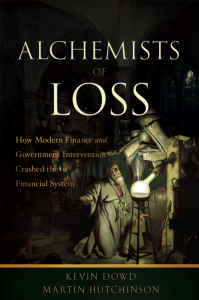Mainstream economists seem to have a problem understanding prices. They might draw supply and demand curves and talk about elasticity. They are sure to have been taught the quantity theory of money. These are merely concepts, debating points in a classroom, with limited practical value. The consequence of replacing price concepts for price reality is that modern economists do not appreciate the consequences of monetary policy.
The most common error is to associate rising prices only with an increase in demand for goods and services, making it hard to imagine price inflation without economic growth. Stagflation, or inflation in a stagnating economy, becomes an unwelcome surprise, but is easily explained at the transactional level. In the pricing of anything, both the supply of the goods in question and the quantity of money available will have a fundamental bearing in setting the price. However, these factors are not necessarily considered when goods are sold and are often ignored.
Crucially, consumers assume that a dollar is a dollar and they never, for the purpose of day-to-day spending, question the value of paper money. People will say they are aware that the purchasing power of paper money declines over time, but they still expect the prices of everyday goods to be the same tomorrow as they are today. If they rise, they normally blame the retailer or perhaps some specific shortage, never realising that they are the victims of what they are otherwise aware of, the declining purchasing power of money. As monetary inflations progress there comes a point where this understanding changes. Increasing numbers of consumers will become aware that fiat money is losing purchasing power rather than the prices of goods rising. Trust in paper money begins to evaporate and the move into physical goods commences, gradually at first but then at an increasing pace. This is what the Austrian economist von Mises called “Katastrophenhausse” – the crack-up boom. Today, with paper money unbacked by anything other than public confidence in it, we are logically exposed to a new katastrophenhausse at any time, if that confidence is challenged.
Besides confidence, the interest that fiat money earns is the only true support it has. Unfortunately, the remedy of deliberately raising interest rates is impractical, because of the very high levels of public and private sector debt. Jacking up interest rates will only bankrupt insolvent governments and other borrowers, and the interest costs would end up being covered by the creation of yet more fiat money.
At some stage, the excesses of monetary inflation will undermine prices, irrespective of economic conditions, raising fundamental questions about purchasing power and confidence in fiat currency. So what does a central banker do? If he keeps a lid on interest rates a crack-up boom results. And if he raises interest rates, monetary inflation accelerates even faster, leading again to a crack-up boom.
It is a classic debt trap: you are damned if you do and damned if you don’t. The important point for owners of gold and silver is that rising interest rates should drive prices higher, and not suppress them as commentators might expect.



A good article, though I didn’t quite follow this bit:
“So what does a central banker do? … if he raises interest rates, monetary inflation accelerates even faster, leading again to a crack-up boom.”
Do you mean that in addition to raising interest rates, the central banker would choose to increase money printing? Is there a reason why he couldn’t choose not to?
Why would a central banker perform two contradicting policies? Low interest rates ‘stimulate’ the economy by allowing banks to extend credit further, high interest rates force banks to hold greater reserves and do the opposite. Printing money is just a more direct way of achieving the aim of a low intersest rate by forcing new money upon banks which they will lend.